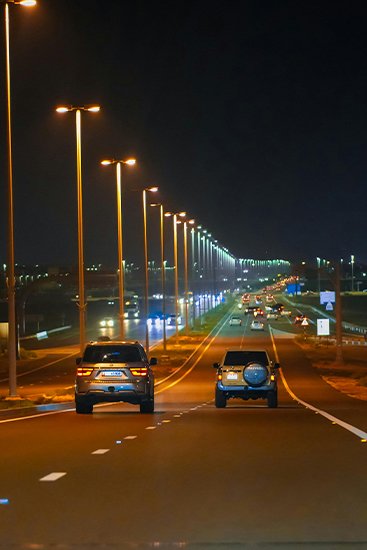Key Traffic Rules for Driving in Abu Dhabi
1. Strict Speed Limits – Unlike other emirates, Abu Dhabi has no 20 km/h grace allowance. Exceeding the posted limit results in fines.
2. Road Alert System – Flashing red, blue, and yellow lights warn drivers about accidents, hazardous weather, and other incidents on highways.
3. AI-Powered Traffic Cameras – Advanced systems detect violations like failing to yield at pedestrian crossings, illegal overtaking, and distracted driving (e.g., mobile phone use).
4. Smart Gates – These detect speeding, expired vehicle registration, and unsafe driving behavior such as tailgating.
5. Average Speed Cameras – Abu Dhabi uses an average speed calculation system on major roads. Instead of detecting speed at a single point, these cameras calculate a driver’s average speed between two points. If the average speed exceeds the limit, a fine is issued. This system ensures consistent speed compliance over longer distances, preventing sudden braking near radars to avoid fines.
6. The change is that the minimum speed limit of 120 km/h on the first two left lanes of E311 (Sheikh Mohammed bin Rashid Road) has now been removed.
Old Rule:
- Drivers had to maintain at least 120 km/h in the first and second lanes from the left.
- Failure to comply resulted in a Dh400 fine.
- Applied since April 2023.
New Rule (as of April 2025):
- The minimum speed limit is no longer enforced on those lanes.
- No more fines for driving under 120 km/h in those lanes.
- The maximum speed limit of 140 km/h still applies.
The change aims to enhance road safety and improve traffic flow, especially for heavy vehicles.
Note: Always follow traffic rules to avoid fines and ensure road safety in Abu Dhabi. For further details, visit the official website. If there are any updates or changes, please email us.


